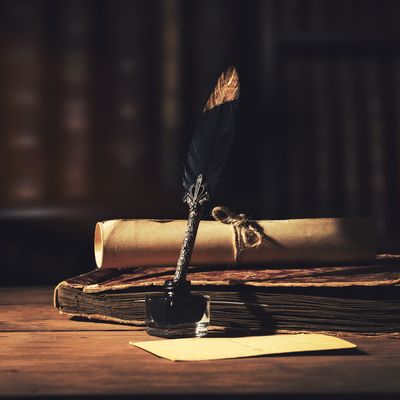Overview
Human? Demi-Human? Humanoid?
Among scholars of the Flanaess, species are broadly classified into humans, demi-humans, and humanoids, each with distinct roles and characteristics.
Humans are the most common race, typically forming the foundation of most societies and cultures within the realm. They are known for their adaptability and shorter lifespans, which often drives them to innovation, exploration, and ambition.
Demi-humans include races like elves, dwarves, halflings, and gnomes—species that are often long-lived and have unique abilities or affinities tied to nature, magic, or craft. They coexist with humans in many lands, often sharing similar values or goals.
Humanoids, however, refer to shorter-lived species with a human-like shape—such as orcs, goblins, hobgoblins, and gnolls—that are often portrayed as adversaries to humans and demi-humans. Traditionally, humanoids have cultures and societies that clash with those of the “civilized” races, embodying a spectrum of alignment but frequently leaning towards the chaotic or evil.
Crowded with nations and groups of every stamp, and threaded through with roads and waterways, the Flanaess is an object of supreme interest to its inhabitants, who see it as the center of enlightened humanity. Some three thousand miles from east to west, it offers immense variety, and, while there is some interest in what lies beyond its borders, most adventuresome types find ample opportunities for exploration within its many lands.
The variety extends to the area’s inhabitants, for there are many demi-human and humanoid races scattered across the Flanaess. Even the humans can be very different, ranging from the native ruddy-skinned Flan, to the olive-skinned Oeridians and pale Suloise who first immigrated, to later immigrants, the gold-skinned Baklunish. A fifth race, the Olman, are natives of the vast Amedio Jungle while a sixth, the Rhennee, believe themselves not to be from Oerth at all.
Humanity
As stated previously, six major races of humanity share the vast Flanaess with numerous nonhumans. Unmixed human races exist in several enclaves, but for the most part the Suel, Flan, Oeridians, and Baklunish have mixed to form a variety of blended types.
Though nearly all the humans of the Flanaess can trace their roots to these four racial groups, each race appears to have developed ages ago in isolation from all others, with its own pantheon of deities, language, and culture. Many folk retain distinctive racial characteristics, but most are difficult to recognize due to long centuries of mixed marriages. However, even in these cases, many families identify with a certain racial group and follow those traditions and customs whether they resemble their ancestors or not.
As such, the skin color of an individual is of no particular importance. The dark Flan complexion shows up quite often in most nations. By contrast, the nobles of the Great Kingdom are proud of being light-skinned, just as the rulers of Tenh are overly conscious of the supposed superiority of their deep bronze color. In the central region of the Flanaess, from western Urnst Duchy to Geoff, there is little heed paid to either skin color or racial type, whether human or demi-human (or even humanoid, in some places). The main exception to this is the demi-human kingdoms, where humankind is judged inferior, especially in Celene.
Demi-Humanity

The demi-human races form a vitally important group in the Flanaess. These races; elves, dwarves, gnomes, and halflings, do not have a shared racial origin by any means, although the dwarven and gnomish peoples are judged by many sages to be closely related.
Yet, what unites them is much more significant than what divides them. They frequently face the same enemies, most obviously the humanoid races. They all stand in the shadow of teeming humanity and are faced with the painful necessities of having to come to terms with this. Their gods, alone among those of the nonhuman races, have the precious power of conferring returned life through their priests to those who have fallen; the spells Raise Dead and Resurrection are known only to these priests and those of humanity. And last but not least, they are allied in the service of good; while there are black sheep amongst all races, and while elves favor chaos and the others favor law, the bulk of these peoples are steadfast in defense of the virtues and values of good. In almost all senses, these races play pivotal roles in the moral conflicts which inspire true heroism and legend.
Humanoids
The humanoid races are the most important group after the demi-humans in virtually all realms. Broadly defined as monsters that have two arms, two hands, at least two legs, and stand generally upright, humanoids typically have their own cultures, societies, morals, values, and attitudes that vary greatly from the general human experience.
They are fecund, their short lifespans balanced by a very high birth rate. These races are generally evil and their gods and pantheons reflect this clearly. They compete with all the surface races for living space, and with most of the underground races who live above the Underdark realms also. They are all aggressive and territorial, and they would surely dominate worlds if not for a major weakness: Many are too chaotic to organize well enough to achieve lasting success, and those races which are lawful often factionalize into competing clans who waste resources skirmishing against each other. These races rarely dominate the world around them because they are divided amongst themselves.
From a distance, within the folds of a hooded cloak, or obscured by deep shadows, humanoids can be mistaken for humans. Only on closer inspection and in the light of day are they immediately seen for what they are. They bear the general shape of humanity, but they have startling — and often times frightening — differences. Some are taller or broader than the average human. Others are smaller, frailer. Many have misshapen features, wicked claws and fangs, thick fur or long, dank hair.
Humanity is one race; humanoid races are legion.

